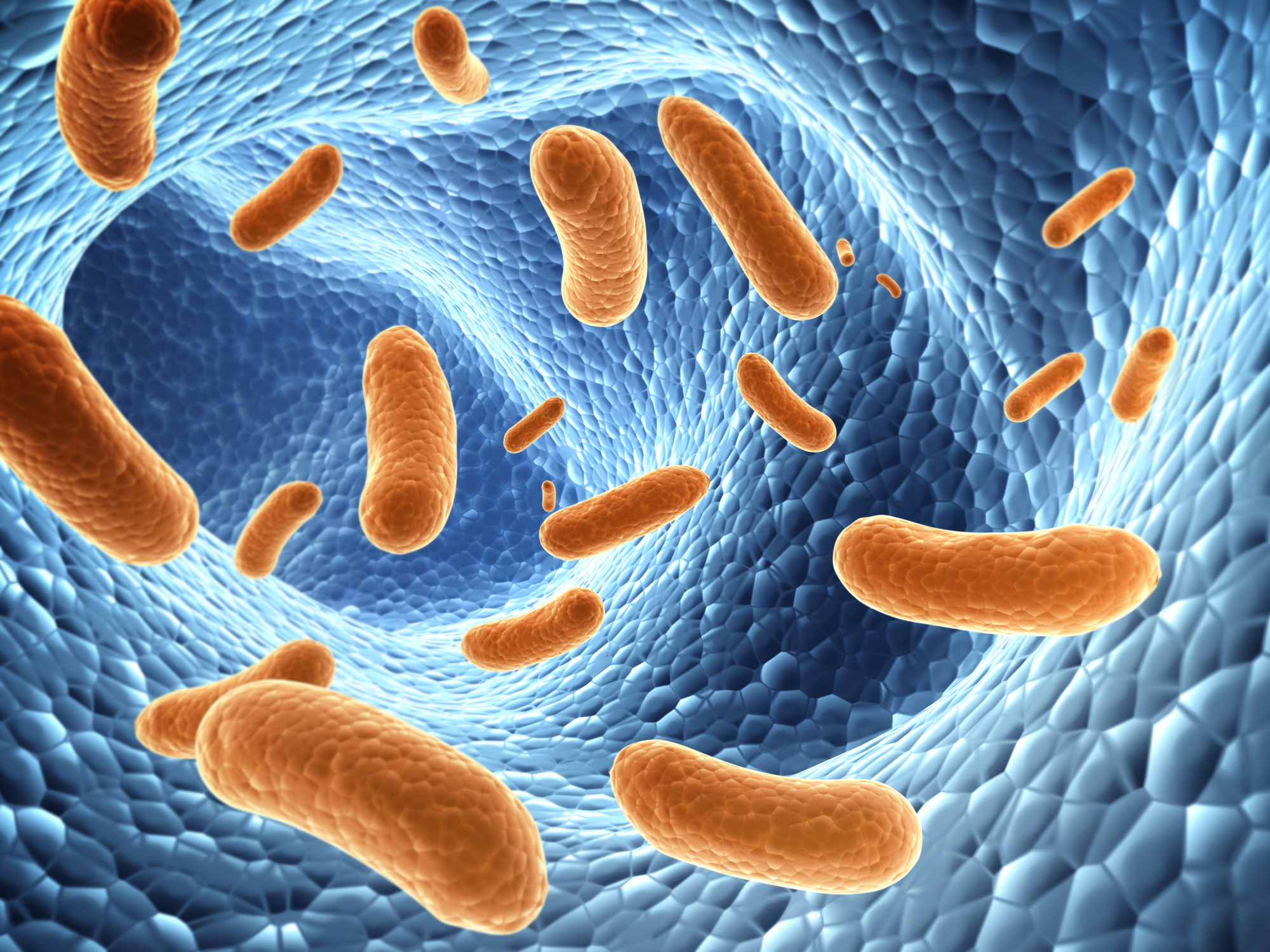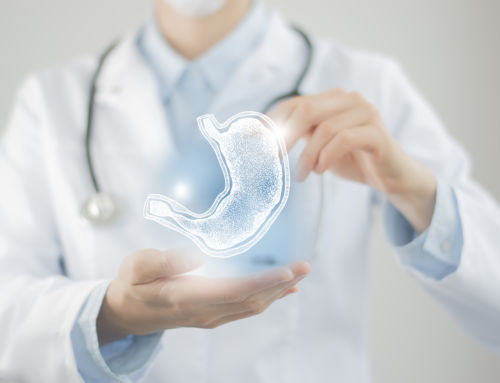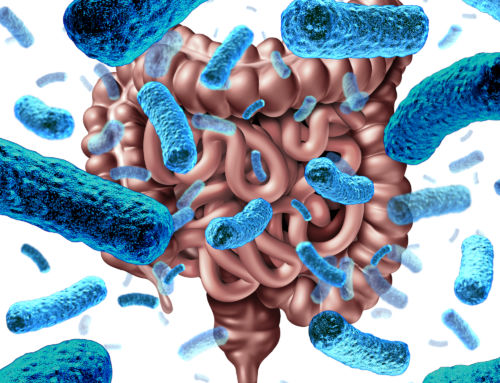BREATH TESTING IN INTESTINAL DISACCHARIDASE DEFICIENCY AND BACTERIAL OVERGROWTH OF THE SMALL INTESTINE
By Lee, Martin J., Barrie, Stephen, Journal of Nutritional & Environmental Medicine, 13590847, Mar96, Vol. 6, Issue 1
Database Academic Search Premier
The breakdown and absorption of nutrients, a key function of the digestive system, is impaired in carbohydrate maldigestion and bacterial overgrowth of the small intestine. The resulting continuous irritation of the intestinal mucosa may have a systemic impact and lead to chronic conditions and increased susceptibility to parasitic infections. Precise diagnosis is therefore of great importance. Traditional methods are invasive, require large challenge doses or, as in elimination diets, do not provide definitive diagnosis. Measurement of hydrogen and methane levels in alveolar samples collected following a carbohydrate challenge is simple, non-invasive and provides good sensitivity, and specificity. Breath tests can further definitively demonstrate lactose maldigestion, differentiate other carbohydrate intolerances and allow determination of severity of carbohydrate intolerance. Percentages of false-negative and false-positives are low compared to traditional methods when instructions are followed properly. Technical advances in collection and analysis have greatly simplified breath tests. Advantages of breath testing for practitioners and patients make this a promising technique for future applications.
Introduction
The digestive system plays a major role in the body’s total health, starting with the proper breakdown and absorption of nutrients that fuel the cells. Carbohydrate intolerances and bacterial overgrowth affect the total picture of digestive functioning. These disorders are associated with continuous irritation of the intestinal mucosa, leading to intestinal dysbiosis and growth of imbalanced bacterial flora. Loss of epithelial integrity affects the absorption of antigens, possible allergens and bacterial breakdown products. Altered permeability due to mucosal damage may bring forth seemingly unrelated conditions including headaches, food allergies and susceptibility to parasitic infections. Chronic disorders, such as arthritis, migraine headaches, asthma or chronic fatigue, may develop as sequelae to the burden of gastrointestinal toxins and antigenic stimulation [1,2].
To avoid long-term consequences of digestive alterations, the astute clinician must investigate the underlying causes of intestinal symptoms using reliable, sensitive and specific testing methods for accurate diagnosis and treatment monitoring. Measurement of hydrogen and methane in alveolar samples satisfies these requirements and has been applied to the diagnosis of carbohydrate intolerances and bacterial overgrowth of the small intestine.
Principles of Breath Testing
Since bacteria, primarily anaerobic bacteria, can produce hydrogen and methane, the presence of these gases indicates that carbohydrates have been exposed to bacterial fermentation. Some of the gases produced are absorbed into the bloodstream and travel to the lungs through the pulmonary alveolar membrane, where they can then be detected in breath samples [3].Hydrogen/methane breath tests for carbohydrate intolerances and bacterial overgrowth involve collection of a baseline fasting breath sample and a series of breath samples taken after a challenge of carbohydrates. The type and dose of challenge and collection times depend on the condition under investigation. Breath testing, done at home or in the physician’s office, is convenient for the patient, as repeated breath sampling is simple, non-invasive, inexpensive and well tolerated [4,5].
Normal Breath Hydrogen and Methane
For non-fasting individuals, the breath hydrogen level is high early in the morning. Hydrogen accumulates because of reduced motility during sleep when food is exposed to bacteria in the colon for longer periods of time. Also, hypoventilation typical during sleep increases the level of hydrogen in the blood and alveolar air because it is not eliminated efficiently. The breath hydrogen level falls during the morning until early afternoon, when it increases slightly until mid-afternoon, probably due to the effects of carbohydrates reaching the colon from lunch meals. Breath hydrogen falls gradually for the rest of the day. In fasting individuals, breath hydrogen falls steadily during the entire day, reflecting the decreasing availability of carbohydrates to generate hydrogen [6].In order to understand breath gas testing completely, it is important to consider methane in addition to hydrogen production. While excreted independently, methane exists with hydrogen in a relationship which is only partially understood [7,8]. Methanogenic bacteria convert hydrogen to methane in the colon. Therefore, bacterial metabolism of disaccharides may lead to an increase in either hydrogen or methane or both gases. Testing for both trace gases reduces the number of false-negative responses and increases the accuracy of the test in the minority of individuals who do not produce hydrogen in response to carbohydrate challenges [3,9,10].
Methodology
Previously, breath testing was available only to physicians who owned a gas chromatograph and who were willing to test patients for hours in their offices. Technological advances have simplified collection, storage and analysis of breath samples. Vacuum-sealed tubes are used for collection and storage of alveolar breath samples. Using a mouthpiece, patients exhale into the tubes and puncture the self-sealing membrane (Fig. I ). During shipping for laboratory analysis the tubes keep intact the breath trace-gases present in the samples [11]. Analyzers specifically designed for determination of breath gases reduce the cost and analysis time. The measurement of hydrogen and methane is based on gas chromatographic separation and electrochemical detection through a solid-state sensor specific for reducing gases [12,13].
Precautions
False-positive or false-negative results are easily avoided by following a few simple guidelines. Foods low in non-starch polysaccharides should be eaten the day preceding breath sample collection and fiber supplements should be discontinued, as non-starch polysaccharides in the colon at the beginning of the test lead to increased baseline breath hydrogen and therefore decrease the sensitivity of the test [14,15]. Smoking in the area where samples are collected may produce high hydrogen levels and unstable baseline results [16]. Sleeping during the test also leads to false-positive results, as the slowdown in removal of breath trace-gases from blood leads to increased hydrogen and methane levels [6]. Reduced transit time, as seen in diabetes and following gastric surgery, will also lead to falsely elevated results, as bacterial fermentation in the colon may be misinterpreted as small intestinal gas production [17].False-negative results can be caused by the use of antibiotics prior to the test [18,19], the use of laxatives or enemas which decrease hydrogen and methane response in malabsorbers and create reduced fermentation in the colon, and severe diarrhea [20]. Hyperacidity also inhibits the generation of hydrogen and results in methane production by colonic bacteria in addition to or instead of hydrogen [21,22].
Lactose Intolerance
The majority of the world’s population is lactase deficient to some degree (Table 1). In this society, lactose intolerance is the most prevalent type of carbohydrate intolerance because milk sugar is very common in a typical diet. Without the lactase enzyme, the intestine cannot break lactose down into glucose and galactose. Lactase production is genetically determined as a dominant trait. Maximum enzyme levels are reached in the human intestine shortly after birth and decline after the age of 3 to 3 1/2 [6]. More than 50 million Americans cannot adequately hydrolyze lactose [23]. They present with symptoms of non-ulcerative dyspepsia and irritable bowel syndrome, such as bloating, diarrhea, flatulence, abdominal cramps and discomfort [24,25].
Lactose maldigestion is frequently recognized for the first time in older patients, possibly because they are more sensitive to intestinal problems. They may have endured gas and other symptoms for years without connecting the symptoms to their diet [3]. Adult onset lactase deficiency may result from conditions that damage the intestinal lining, such as infectious diarrhea, intestinal parasites or inflammatory bowel disease. Alcoholism, malnutrition, pelvic radiation therapy and drugs such as antibiotics can also trigger lactose maldigestion [26].
Precise diagnosis of lactose maldigestion is very important since many people never relate their intestinal symptoms to their diet and continue eating foods they cannot digest properly [5,23]. In one study, 42% of lactose-intolerant patients did not associate their symptoms with any particular food [27]. At times, individuals may even mislead their physicians by denying a connection to their symptoms and their diet [27,28]. A lactose tolerance test can dramatically demonstrate the connection between symptoms and diet to patients, and emphasize the importance of following diet restrictions [28].
On the other hand, patients may be unnecessarily avoiding dairy products. Since milk and dairy products are important sources of calcium and vitamins, particularly for children, pregnant women, nursing mothers and older adults, they should not be eliminated from the diet without good reason [5,29].
Precise diagnosis further avoids misdiagnosis of milk allergy. Individuals who do not produce sufficient quantities of lactase are not necessarily allergic to milk proteins. Treatment options, such as lactase replacement therapy, can help individuals with lactose intolerance to enjoy milk products but will not benefit patients who are allergic to milk proteins or who cannot adequately digest other sugars.
Exclusion of milk products has been used to determine lactose intolerance. This is not a conclusive test for several reasons. Many patients cannot or will not follow the necessary instructions. Unsuspected foods and drugs use lactose as a filler, making it more difficult to remove milk products totally from the diet. Patients who continue eating these foods may experience on-going symptoms, leading to a false-negative diagnosis [5]. Other common disaccharides and sweeteners can cause digestive disorders and symptoms, in which case taking patients off milk does not diagnose the underlying problem. Further, it may take a test to demonstrate lactase deficiency in marginal lactose malabsorbers.
Histology requires collection of a biopsy sample from the small intestine using an endoscope or a Crosby capsule. The sample is then tested for the ability to generate glucose and galactose from lactose applied in vitro. Due to its expense and unpleasantness for patients, this approach is rarely used to diagnose disaccharide intolerance.
Blood and urine tests have been used to diagnose lactose intolerance. Following the lactose challenge, serial blood samples are drawn or serial urine samples collected to measure a change in galactose. If no change occurs over time, the test suggests lactose maldigestion. The assessment of a urinary lactose/galactose ratio has also been reported [30]. Since glucose is rapidly metabolized, a large dose of lactose is necessary, which often produces significant symptoms in lactase-deficient individuals. Traditionally, the galactose serum and urine tests also require prior oral ingestion of alcohol to suppress rapid galactose turnover by the liver. The alcohol can impair patients physically and mentally, making it impractical for use in office or outpatient settings [19]. However, a recent report has suggested reliability of the strip test for urinary galactose without ethanol ingestion [31].
Limitations of traditional methods explain why the breath hydrogen/methane test has become the standard for diagnosing lactose intolerance. The lower challenge dose employed causes significantly fewer side-effects than the dose used in blood and urine tests [32]. The breath hydrogen/methane test is the standard in pediatric cases where other tests would be difficult to perform [33-37].
In the breath hydrogen/methane test, a patient fasts overnight and collects a morning baseline breath sample. Lactase enzyme supplements should be discontinued 24 h prior to the test. The patient then ingests a challenge dose of lactose and collects breath samples at 1-, 2- and 3-h intervals [38-41]. Longer sample collection periods are optional. Administration of weight-dependent challenge doses has been reported [33,4244].
As little as 2 g of undigested carbohydrates reaching the colon can produce a detectable increase in breath hydrogen and/or methane [45]. A minority of individuals, however, do not produce hydrogen in response to some carbohydrate challenges. Typically, 8-12% of all patients tested for lactose intolerance will be false-negative if only hydrogen is measured [44,46,47]. Suspected false-negative patients can also be tested with a 10 g dose of lactulose, a synthetic non-absorbable disaccharide known to be carried to the colon [48]. Colonic flora capable of generating hydrogen following the lactulose challenge should as well produce a response if lactose reaches the colonic fermenting bacterial flora. A negative lactulose challenge test indicates that colonic flora do not ferment lactulose and the negative lactose challenge test may actually be positive. Other avenues will then have to be pursued to determine whether the individual is indeed lactose intolerant (Fig. 2).
The normal breath hydrogen level in a healthy, fasting patient is less than 10 ppm [49]. Lactase-deficient individuals may show a small variation in breath hydrogen of a few parts per million during the test period. Levels typically rise during the first hour after lactose is ingested and fall back to near-control levels later during the test. An increase in breath hydrogen concentration of 20 ppm or more during the test period is indicative of lactase deficiency [43,50]. The normal breath methane level in a fasting patient can vary from 0 to 7 ppm. An increase of at least 12 ppm of methane alone during the test is considered positive for lactose maldigestion regardless of the hydrogen response [7,8].
If both breath hydrogen and methane rise after a lactose challenge, the two responses are added to estimate the degree of malabsorption. Any increase in methane will decrease the hydrogen response, either due to substrate depletion or to conversion of hydrogen to methane. When breath hydrogen and methane are summed, the test interpretation requires a rise of 20 ppm or more to suggest lactose malabsorption [6].
The breath test is highly specific for lactase deficiency. It is able to quantify incomplete digestion of even small amounts of lactose, leading to a more precise estimate as to the degree of deficiency compared to other methods. This enables patients diagnosed with lactose intolerance to modify their diets and possibly enjoy more foods [27,34,38,50,51]. While guidelines are somewhat subjective, patients may be able to limit their avoidance of dairy products depending upon the severity of their maldigestion. Decreasing the rate of gastric emptying by increasing the fat content or total caloric density of the lactose-containing meal may reduce symptoms. Whole milk, for example, may be better tolerated than skim milk [5].
For more severely intolerant individuals, lactase enzyme preparations added to milk and other products are commercially available and have been shown to provide relief from symptoms. These preparations can hydrolyze 70-99% of the lactose over 24h in the refrigerator [5,52,53]. Maldigestion or malabsorption of carbohydrates other than lactose, such as fructose [54-58], sucrose [59-61] and maltose [62,63], occur less frequently but should be considered if symptoms of carbohydrate intolerance persist in individuals with a negative lactose tolerance test.
Bacterial Overgrowth
Bacterial overgrowth of the small intestine is a serious digestive disorder that is treatable after proper diagnosis. Although widespread, it is frequently unsuspected in cases of chronic bowel problems and carbohydrate intolerance since its symptoms mimic these disorders. Bacterial overgrowth of the small intestine should be suspected if a patient exhibits abdominal gas, bloating or diarrhea within an hour of eating and cannot tolerate carbohydrates or starchy foods, fiber supplements or beneficial flora supplements. Hypochlorhydria or reduced transit time is also suggestive of bacterial overgrowth, particularly if stool analysis indicates maldigestion or malabsorption and if symptoms persist after treatment. Bacterial overgrowth should further be considered if lactose maldigestion is suspected but ruled out by a lactose tolerance breath test, and if the patient has abdominal symptoms coupled with unexplained systemic symptoms such as vitamin b[sub12] deficiency, chronic weight loss or chronic skin problems [64]. Distinguishing bacterial overgrowth of the small intestine from other problems with similar symptoms and monitoring treatment effectiveness requires accurate diagnosis of the disorder.
Normally, far fewer bacteria inhabit the small intestine than the luxurious growth found in the colon. Gastric acid secretion and intestinal motility keep the small intestine relatively free of bacteria. The flora of the proximal small intestine is dominated by gram-positive aerobes or facultative anaerobes, Lactobacilli and enterococci, and usually does not exceed 104 viable organisms per milliliter secretions. In individuals with bacterial overgrowth, small intestinal flora resembles colonic flora in density and complexity, often reaching 10[sub8]-10[sub10] viable organisms per milliliter of secretions. Fastidious anaerobic bacteria such as Clostridia, Bacteroides and anaerobic Lactobacilli predominate. Enterobacteria, enterococci, Clostridia and Diphtheroids have also been found, as have aerobic overgrowth flora such as Escherichia coli, Klebsiella or Pseudomonas [64-66]. A wide range of abnormalities and malfunctions can encourage bacteria to multiply in the small intestine (Table 2). Many years, however, may pass between the development of diverticula and symptoms of bacterial overgrowth [64].
Bacterial flora produces a wide variety of different enzymes which act upon substrates presented to them through the diet and has the ability to act as a small biochemical factory [71]. Some of these enzymes generate fermentation products normally not found in the small intestine that can prove toxic to the organism. Gut flora metabolizes biliary steroids, which play a part in producing the diarrhea commonly seen in bacterial overgrowth, and which may be involved in the development of colon cancer [66].
Overgrowth of flora in the small intestine can produce proteases which inactivate pancreatic and brush border digestive enzymes. It can destroy dietary flavonoids, which serve as important natural antioxidants but are rapidly broken down and hydrolyzed by gut flora. It can also hydrogenate polyunsaturated fatty acids, deconjugate bile salts, consume vitamin B[sub12], produce vitamin B[sub12] antagonists and produce nitrosamines. By inhibiting proper nutrient absorption, bacterial overgrowth of the small intestine can lead to systemic disorders such as altered permeability, anemia and weight loss, osteomalacia and vitamin K deficiency [68].
Bacterial overgrowth of the small intestine may contribute to maldigestion and malabsorption. It frequently is a complication of parasitic infection. Patients with pancreatic insufficiency secondary to chronic pancreatitis are prone to developing bacterial overgrowth of the small intestine [72].
The incidence of bacterial overgrowth of the small intestine increases with age, particularly in people aged 80 and older [73]. Elderly patients may develop malabsorption secondary to bacterial overgrowth; it has been suggested as the major cause of clinically significant malabsorption in the elderly and linked to the `failure to thrive syndrome’ seen in older patients [64,68].
Intubation and culture of intestinal aspirates provides definitive diagnosis and is the standard for determining bacterial overgrowth of the small intestine [74]. However, this approach is invasive, assesses only one or few sites and may miss flora elsewhere, leading to false-negative culture. The non-invasive alternative of breath trace-gas analysis has much to recommend it [64,75-77]. Breath testing is not effective, however, in the minority of patients who do not produce hydrogen or methane in response to a carbohydrate challenge.
Lactulose and glucose are commonly employed as challenge substances. While both are simple and effective tests providing accurate information, each has its merit.
Lactulose, a synthetic disaccharide not absorbed by the digestive system, produces hydrogen after coming into contact with bacteria in the gut [78]. Typically, the patient collects a fasting breath sample, drinks a 10-g lactulose solution, and collects breath samples every 15 min for 2 h [6].
This test provides good sensitivity and specificity. The challenge dose is carried further toward the jejunum than glucose, and therefore continues testing for bacterial overgrowth more distal in the intestinal tract. Interpretation, however, is more difficult than that of glucose due to the possible late peak of colonic fermentation. Lactulose can also cause mild discomfort or diarrhea in some patients, although this usually occurs at higher doses than used in the breath test.
The lactulose challenge typically causes a two-phase response. Hydrogen may increase early, between 1 and 1- h after the challenge, as lactulose comes into contact with bacteria in the small intestine. This rapid response distinguishes bacterial overgrowth from normal colonic flora, which produce a later more prolonged increase in breath hydrogen [79]. It is therefore advisable to monitor breath gas during the first 2 h so that colonic fermentation is either not detected or seen as a rise in the last breath specimens. A breath hydrogen peak greater than 12 ppm above the fasting level, observed within 30 mins of ingesting lactulose and preceding the colonic response by 15 min, is considered indicative of bacterial overgrowth of the small intestine [79,80]
The glucose test requires ingestion of an 80-g glucose solution [75]. The test provides good sensitivity and specificity. It can be performed at the same time as a glucose tolerance test if both are medically indicated. However, it is not suitable for patients with diabetes, hypoglycemia or other blood sugar disorders. If the presence of yeast in the colon is regarded as a medical condition, ingestion of sugar may be inadvisable due to its potential for promoting yeast growth. Lastly, it may be important to remember that it has reduced sensitivity for distal ileum activity of bacterial overgrowth [79].
A fasting breath hydrogen or methane level greater than 20 ppm is likely in patients with bacterial overgrowth. Since the fasting breath hydrogen level can be suppressed by methanogenic bacteria, testing for both hydrogen and methane is more sensitive than testing for hydrogen only. Combining the observation of a fasting breath hydrogen level greater than 20 ppm with a positive hydrogen response greater than 15 ppm reduces the chance of false-positive responses [6]. Elevated fasting methane levels are also seen with bacterial overgrowth [81,82].
Once bacterial overgrowth of the small intestine has been diagnosed the overgrowth symptoms require treatment; furthermore, the underlying causes have to be investigated to keep bacterial overgrowth from recurring.
While 250 mg tetracycline given orally four times daily has been a traditional antibiotic choice, research indicates up to 60% of patients with bacterial overgrowth no longer respond to it. Several broad-spectrum antibiotics have been used effectively. A regimen of three daily doses of 250 or 500 mg amoxicillin/clavunolate (Augmentin) is generally effective and well tolerated. Acceptable alternatives include cephalosporins and metronidazole [64].
Antimicrobials such as penicillin, ampicillin, neomycin, kanamycin and oral aminoglycosides are ineffective in treating bacterial overgrowth because of their poor activity against anaerobes. A non-absorbable rifamycin derivative has been used effectively against anaerobic intestinal bacteria in Italy. Four out of six patients showed improvement when given 800 mg two times daily for 5 days. Higher doses did not result in greater treatment success [67].
Several natural antimicrobials may be useful in the treatment of bacterial overgrowth syndromes. These include bismuth, a broad-spectrum antimicrobial absorbed in the gut, bentonite, which inhibits bacterial growth and activity, absorbing many bacterial byproducts, berberine, an alkaloid with antimicrobial, antifungal and antiprotozoan activity, and herbal mixtures containing gentian and sanguinaria, which have very strong broadspectrum antimicrobial activity.
A low-starch or low-sugar diet may be helpful in reducing diarrhea and steatorrhea. Whether starch or sugar needs to be restricted is dependent on the location of bacterial overgrowth in the small intestine. If bacteria are predominantly located in the jejunum, patients tend to be more intolerant of sugars. Starch may have a greater effect on patients with overgrowth in the ileum. Soluble non-starch polysaccharides may exacerbate abnormal gut ecology. A diet free of cereal grains is generally helpful. Potential deficiencies of nutrients, such as vitamin B[sub12], vitamin K and calcium, should be considered [64,82].
Bacterial overgrowth of the small intestine may recur if the root causes are not eradicated (Table 2). Hypochlorhydria and achlorhydria limit the body’s ability to utilize nutrients from food and supplements. Numerous studies have shown that acid secretion decreases with age, possible due to atrophy of various digestive functions [82]. With low gastric acid, ingested food is not adequately sterilized. Normal colonic bacteria may then move `upstream’ into the small intestine, causing the return of bacterial overgrowth. Betaine hydrochloride may be useful in replacing hydrochloric acid in patients not producing sufficient amounts. Reduced motility may be caused by inadequate water intake, a low non-starch polysaccharide diet or aging. Addition of insoluble non-starch polysaccharides helps to create bulk and encourage motility.
Summary
Breath test technology provides physicians with a convenient, user-friendly and reliable diagnostic assessment of carbohydrate intolerance and bacterial overgrowth of the small intestine. Breath testing also provides quantitative diagnostic information (i.e. the degree of response to a lactose challenge), giving insight into the severity of lactose maldigestion.
With more than 400 volatile organic compounds identified in normal breath to date, the diagnostic uses of breath testing continue to grow. There are reports on the use of breath analysis in the assessment of mucosal malabsorption [83-85], liver function [86,87], pancreatic insufficiency [88-92], gastric acidity [93,94], Helicobacter pylori detection [95-99] and exposure to toxic chemicals [100]. Investigators are considering clues to the biochemical basis of many diseases, including the effect of free radicals on cellular damage [101,102]. Considering the benefits gained from breath testing and the specificity in diagnosis it offers, we may certainly expect to see the number of applications increase in the near future.
TABLE 1. Incidence of lactose intolerance in adults of various ethnic groups [5, 23] Ethnic group Lactose intolerant (%)
African Blacks 95-100
Orientals 90-100
North American Blacks 65-75
Mexicans 70-85
Mediterraneans 60-80
Jewish Descent 60-70
Middle Europeans 10-20
North American Caucasians 10-20
Northern Europeans 1-10
TABLE 2. Common causes of bacterial overgrowth of the small intestine [67-70]
- Achlorhydria, hypochlorhydria or drug-induced hypoacidity
- Crohn’s disease
- Diabetes mellitus
- Giardiasis and other parasitic infection
- Immunodeficiency syndromes (particularly sIgA)
- Intestinal adhesions
- Systemic lupus erythematosus
- Malnutrition
- Chronic pancreatitis
- Reduced motility in elderly patients
- Scleroderma
- Statis due to structural changes–diverticulitis, blind loops, radiation damage
References







